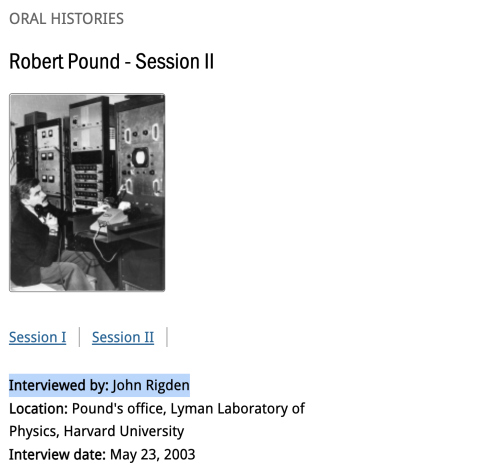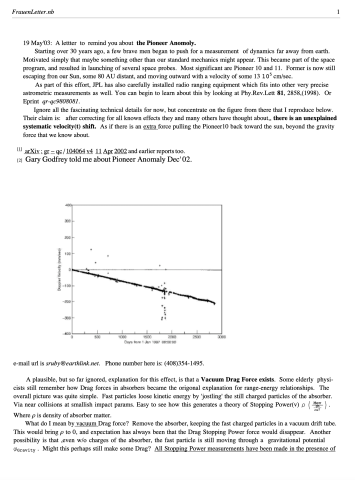When I first discovered Stan's 1954 doctoral dissertation
AIP Oral History: Robert Pound—Session II

Action At a Distance: Stan's later work and speculations will be collected in a new family story
FrauenLetter.nb

Stan writes in 2003 to Hans Frauenfelder, a colleague from the old Mössbauer days, to try to interest him in working together on an experiment to test Stan's idea of a Vacuum Drag Force, which he thinks may explain the so-called Pioneer Anomaly. Frauenfelder's reply is not available.
19 May'03: A letter to remind you about the Pioneer Anomoly. Starting over 30 years ago, a few brave men began to push for a measurement of dynamics far away from earth. Motivated simply that maybe something other than our standard mechanics might appear. This became part of the space program, and resulted in launching of several space probes. Most significant are Pioneer 10 and 11. Former is now still escaping fron our Sun, some 80 AU distant, and moving outward with a velocity of some 13 10 5 cm/sec.
Hans, I would really enjoy seeing an straightforward earthly measuremnt of Vacuum Drag before I die. And have thought a little bit about how some measurements with < 100 Mev electrons would be able to do this. How would you go about it?
I do not have sufficient credibility to get others interested in this adventure. But you would. 1960 was the most enjoyable year of my life. Might be that in 2004, we could drive a terrestrial confirmation of vacuum drag. Do you want to play?
Action at a distance
Stan's Mathematica notebooks document his later work and speculations